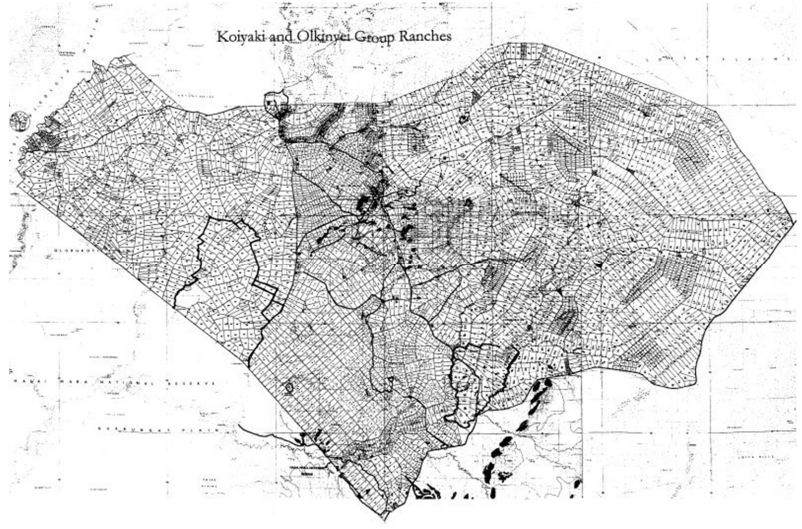Protecting Wildlife Habitat
The Porini Conservation Programme
The home of wildlife & biodiversity protection in conservancies
New Developments
Biodiversity & carbon credit activities
Biodiversity & carbon credit revenues to bring greater benefits to community landowners and wildlife habitat
As a result of population growth, increase in livestock numbers, climate change, and land use change there is an even greater need to find ways beyond tourism revenues to bring greater income to community landowners to keep wildlife habitat protected, corridors secured, and community livelihoods improved.
The need to diversify the opportunities and income potential for landowners became very apparent with the Covid19 Pandemic that shut down international travel and tourism and put the community’s livelihoods, wildlife, biodiversity, and habitat at great risk.
“As tourism completely collapsed, we realized that we need to find other ways of raising revenue and income to be able to continue keeping paying the leases, keeping community livelihoods supported. It was also apparent that along with the community leaders, our community rangers, the grazing committees, and so many others that we were spending a lot of money and effort protecting wildlife habitat, and biodiversity and sequestering carbon for the world but only getting revenue from one source – tourism”, says Mohanjeet Brar, Managing Director of Porini Camps, who lease and runs Selenkay and Ol Kinyei Conservancies.
We’ve always believed for the last 30+ years that the value is in protecting habitat and biodiversity. Positive carbon sequestration is a benefit of healthy ecosystems and carbon credits shouldn’t be the key focus as this can lead to incentivizing monoculture growth and even invasive plant species sequester carbon but negatively impact biodiversity. With climate change, it is also very apparent that biodiverse and healthy ecosystems are more resilient.
Therefore we partnered with like-minded leaders in Kenya and the US and co-founded EarthAcre a company that brings a full suite of technologies to landowners and conservancies, enabling them to get income from their carbon and biodiversity faster, simpler, and for more money.
Along with our chief scientist, Andrew Davies, from the Harvard Davies Lab, we are conducting research in our conservancies and commercializing this technology.
The conservancy and landowners can benefit from carbon credits and planned biodiversity credits – mechanisms designed to channel funds to landowners who preserve natural biodiversity hotspots and carbon storage from intentional interventions. Carbon polluters, for example, can offset their greenhouse-gas emissions by “purchasing” emissions that are reduced or saved by other members of the scheme. While carbon credit markets are well established, the biodiversity credit market is still nascent but seen as critical and of the greatest value to a more resilient, healthy, and secure world. A lot of commitments and financing have been announced at the recent UN Biodiversity Conference (COP 15) held in December 2022 in Montreal. In addition, recently many of the biggest global companies like Microsoft, SalesForce, and others, are making specific Nature Positive goals. This will unlock greater funding for landowners and conservancies that are protecting biodiversity and we aim to allow this to happen quicker and with greater transparency with technology.
Community Conservancies
Promoting eco-tourism based land utilization
Safeguarding biodiversity through community partnerships
In our view, the key to conserving Kenya’s spectacular flora and fauna outside the parks is to engage the local communities and to provide tangible benefits from eco-tourism that exceed the returns that they are able to generate from any other form of land utilization such as farming. We have succeeded in making wildlife pay its way in the areas where we operate and we take every opportunity to share our experience with others interested in setting up private conservancies in partnership with local communities.
The roots of wildlife degeneration
The concept of wildlife conservancies in Kenya was devised as a means to address the escalating issue of lost indigenous habitat and the resulting impact on the country’s unique wildlife. Division of land, over-grazing and intensive farming were increasing, as was a conflict between landowners and wildlife.
Examples of Wildlife Degeneration
Selenkay Conservancy, Amboseli
The Selenkay area was previously an important wildlife dispersal zone and elephants migrated in from Amboseli during the wet season. However, during the 1970s and 1980s, (prior to our conservancy) there was increased hostility towards wildlife by the community. Elephants were harassed to the point that they stopped migrating into Selenkay. There was also wide-scale snaring of wildlife for the “bush meat” trade while leopards, lions, and cheetahs were frequently speared.
The Mara ecosystem
The Mara eco-system (where Ol Kinyei, Olare Motorogi, and Naboisho Conservancies are located) is under serious threat of being degraded and fragmented as land is being divided into individually owned plots. Tracts of wildlife habitat are being permanently lost with this subdivision of the community ranches. Many small individual landowners are now selling their plots to the highest bidders, who are setting up non-sustainable mass market concrete lodges or becoming involved in intensive farming and fencing of their small holdings. Snaring of herbivores and poisoning of big cats has increased and wildlife is being driven out.
Previously, the Maasai were entirely dependent upon their livestock and in recent years have lost much of their rangeland where there is permanent water. As a result of the increasingly frequent droughts in East Africa, there has been a degradation of the environment through over-grazing and the Maasai communities have suffered a hardship with the loss of livestock.

A success story that is swiftly catching on!
Our unique, award-winning Conservancy projects have gone a long way in bringing long-term benefits to local communities whilst also protecting the land and wildlife and ensuring an enhanced wilderness experience for guests to our Porini Safari Camps.
We are delighted to see that the success we have had with our initial conservancies has been noted by other tour operators and there is now a real momentum towards more conservancies being set up along similar lines. Having a successful model makes the setting up of future projects simpler for all those interested. We believe that conservancies, like ours, where the local communities are deriving a benefit from eco-tourism that is greater than other forms of land utilization is the way forward for Conservation in Kenya and one that can be duplicated in other parts of Africa.
The
beginnings
Our first community conservancies in Amboseli & the Maasai Mara
Selenkay Conservancy, 1997
In 1997 we signed an agreement with a Maasai community to establish the first Conservancy (Selenkay) on 13,000 acres of their land in the Amboseli eco-system.
Ol Kinyei Conservancy, 2005
Following the success of Selenkay Conservancy, in 2005 we set up the Ol Kinyei Conservancy in the Mara eco-system which was initially 8,000 acres and later expanded to 18,700 acres. This equates to less than 10% of the community’s total land. This was the first conservancy of its kind in the Mara based on our concept of land being leased and set aside as a conservancy exclusively for wildlife, with no human settlement, and using our formula of a minimum of 700 acres of conservancy for every guest tent and a maximum of 12 tents for any one safari camp, to ensure a low-impact form of tourism.
Olare Orok, 2006
Then in 2006 we were involved with others in setting up the 22,000 acre Olare Orok Conservancy (OOC) in another part of the Mara.
Olare Motorogi Conservancy
Ol Kinyei and OOC were followed by the establishment of two more conservancies in the Mara: the 11,000 acre Motorogi Conservancy and the 50,000 acre Naboisho Conservancy. The Olare Orok Conservancy and Motorogi Conservancy were then re-named to Olare Motorogi Conservancy as the two conservancies are adjacent and managed as one entity of 33,000 acres.
The areas to be used as conservancies were chosen by the Maasai landowners and set aside for wildlife so that they could be leased out as conservancies and utilised for eco-tourism to generate an income and economic benefits for the local community.
Better Safari Experience
Our low-impact formula: 700 acres of pristine biodiversity per tent
Authentic, private safaris, away from the crowds
The Porini Camps, situated inside private conservancies and key protected areas in Kenya, are small eco-friendly tented camps that accommodate a maximum of around 20 guests. The camps each consist of just 6 to 10 spacious tents in beautiful natural settings under acacia trees.
Porini guests benefit from an authentic safari experience on exclusive game-filled land, away from the crowds of tourists and minivans in other areas. Game drives are with professional safari guides in 4×4 vehicles. Guests enjoy escorted walks with Maasai warriors and can search for nocturnal species on exhilarating night game drives – unlike in the government-run National Parks where these are not permitted.
The income from the camps is used to manage and improve the conservancies, pay the lease and tourist entry fees and pay salaries of the camp staff and the conservancy rangers and workers.
Wildlife regeneration
Turning biodiversity into valuable community income
While the environment in our conservancies is thriving, wildlife from the busy National Parks is increasingly seeking refuge in our low-impact conservation areas
Our partnership with the local communities in setting up the conservancies has made a significant contribution to improving the conservation of the wildlife and habitat of these areas.
Within just a short time of conception each conservancy saw a significant increase in wildlife numbers and a regeneration of vegetation in areas that were previously over-grazed by livestock. At Selenkay, elephants returned after an absence of twenty years and in the Mara conservancies the number of lions increased very quickly with several residential prides totalling over 120 lions in an area of 100,000 acres, while breeding cheetah took up residence in addition to an influx of other species.
Today, the conservancies support a broad range of species in a protected environment that has returned to its natural state. Wildlife enters the conservancies from the busy neighbouring National Parks where tourist / visitor numbers are not regulated.
Being able to directly benefit from healthy biodiversity has completely turned around the communities’ attitude toward wildlife conservation
As a result of the communities receiving direct benefits from wildlife, there has been a change in attitude towards the concept of wildlife conservation. The community members have given their positive support to conservation and there is no snaring or harassing of wildlife within the three conservancies. The members see wildlife as a resource that belongs to them and are enthusiastic about encouraging wildlife to move into their conservancies. They also recognize the vast improvement in vegetation and grass cover within each conservancy which is now a valuable source of controlled grazing for livestock during severe drought periods.
Community Partnerships
Securing sustainability through win/win opportunities
Our community conservancy model is unique as it doesn’t depend upon donor funding. It is a partnership between the local community and a commercial safari operator, where both parties’ goals are aligned. We believe that one of the keys to our success is recognizing that the community must derive fair benefits and not be taken advantage of.
Important aspects include taking the time to explain the goals of the project, how conservation and ecotourism can benefit them and their children and helping to set some realistic expectations. In establishing the Conservancies a long period was required for meetings, discussions and spending time together, in order to build trust between the local community and us.
Community
Benefits
Directly channeling over US$1.5 Million per Year to the local Communities
Our Model has positively impacted the lives of over 1,000 Maasai families in the areas we operate in
A monthly rental (that increases annually) is paid to the Maasai landowners as a lease for all the land in the conservancies and the company give first priority to family members of the local community for jobs in the camps and conservancies so that over 95% of the staff are drawn from the local people whose parcels of land have been joined together to form the different conservancies.
There are over 1,000 Maasai families who are directly benefiting from the conservancies which we are involved in leasing and managing. Their lives have improved with a guaranteed income from the lease and less reliance on livestock as their sole income source while many have members of their families earning a livelihood in the conservancies in which they have a stake.
Tackling systemic Unemployment in Rural Areas
Previously, opportunities for jobs were almost non-existent, especially at Selenkay, but Gamewatchers Safaris & Porini Camps now employ over 140 members of staff from the communities. Take-home earnings of individual staff members are over USD105 per month for the most junior staff which is significantly higher than average in rural areas. Thus the conservancies have provided a solution to the problem of the lack of job opportunities by providing additional incomes to households and alternative livelihood opportunities to livestock ranching.
Direct Monetary Benefits
The monetary benefits to the communities generated from payments by Gamewatchers Safaris from each of the Conservancies where we are involved exceeded a total of 1 million dollars in each of the 6 years between 2014 and 2019, exceeding US$1.5 million by the last year. In 2020, owing to the massive disruption of tourism by the Covid pandemic, the incomes halved to a total of just under $750,000 but this was a considerably better result than might have been expected. Once tourism numbers return to normal we should see the income streams to communities picking up again:
Selenkay Conservancy: total cash flowing into community from the conservancy project:
2023: $293,816, 2022: $333,679, 2021: $ 194,816, 2020: $172,656, 2019: $390,703, 2018: $352,100, 2017: $300,300, 2016: $343,000, 2015: $259,000, 2014: $235,000
Ol Kinyei Conservancy: total cash flowing into community from conservancy project:
2023: $640,287, 2022: $ 646,107, 2021: $397,175, 2020: $322,991, 2019: $639,950, 2018: $566,840, 2017: $ 501,300, 2016: $457,000, 2015: $412,000, 2014: $400,000
Olare Motorogi Conservancy: our contribution to the conservancy project:
2023: $426,727, 2022: $ 382,607, 2021: $ 226,690, 2020: $232,943, 2019: $461,159, 2018: $371,000, 2017: $332,100, 2016: $331,800, 2015: $291,000, 2014: $380,000
Ripoi Conservancy: our contribution to the conservancy project:
2023: $210,924
The income per hectare exceeds income from small-scale cultivation and is particularly high in Selenkay which is a semi-arid area. Our projects are able to generate a cash flow of US$1.5 Million per year directly into the local communities, increasing annually with no direct financial expense to them for the operating costs of the conservancies (infrastructure such as water-holes or roads and wages for wardens and rangers as well as other running costs). We have also provided employment opportunities to the Amboseli and Mara communities in our other camps in Ol Pejeta Conservancy and Nairobi National Park.
Environmental
Policy
The primary purpose of our operations is conservation of the environment
Committed to promoting Environmental Best Practices across the board
Our Porini Camps are run and maintained with conservation of the environment at the forefront. We have a written environmental policy for water, land, energy, solid waste and sewage which is adhered to by the camp management. We pride ourselves in having highly qualified safari guides and they enhance the experience by educating the guests about the flora, fauna and people of the surrounding areas.
We are committed to promoting Best Practices across the board. We pay well above the national average, have a written environmental policy that is strictly adhered to and monitor other safari companies in Africa to be sure that we make every effort to stay abreast of new developments in our industry and are always looking to implement improvements.
An awarding winning & exemplary model
Porini Mara Camp is included in the World Tourism Organisation’s Directory of Best Practice in Ecotourism as a positive example from Kenya, and all of the Porini Camps have been awarded a Gold Eco-Rating by Ecotourism Kenya who promote environmental and social responsible practices within the tourism industry.
A number of recent reports by researchers attest to the positive effects of the conservancies and latest research shows that wildlife numbers in Kenya are in steep decline mainly through loss of habitat as a result of huge increases in human population and livestock. There is now a growing realization that wildlife conservancies on private or community lands are the best way of restoring the rangeland for wildlife.
Our projects have also been included in a British school textbook as an example of ecotourism projects that are working with and benefiting the local community and environment.
We feel it is important to effectively communicate the project’s actions to stakeholders, locally and internationally. Our company literature which is given to each client emphasizes our goals. The project and its benefits have been featured in newspapers such as The Guardian, The Observer, The Times, The Independent, Mail on Sunday and in numerous magazines such as Condé Nast Traveler and National Geographic Adventure magazine. Our founder Jake Grieves-Cook was interviewed about the future of the Mara by Swara magazine, a publication of the East African Wildlife Safari. Click here to read the interview
Guest Testimonials

“What a marvellous example of how people and wildlife can live alongside one another. Thank you all.”
“For any serious wildlife photographer, I don’t think you can do better in Kenya or Tanzania than the Porini Mara and Lion Camps for the big cats.”

